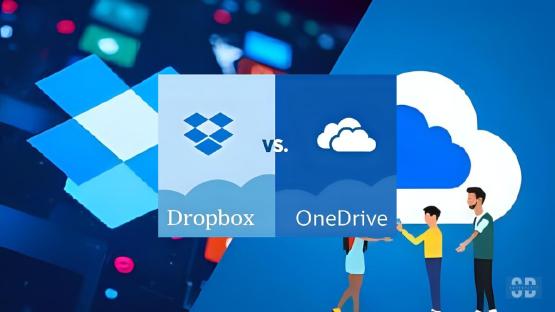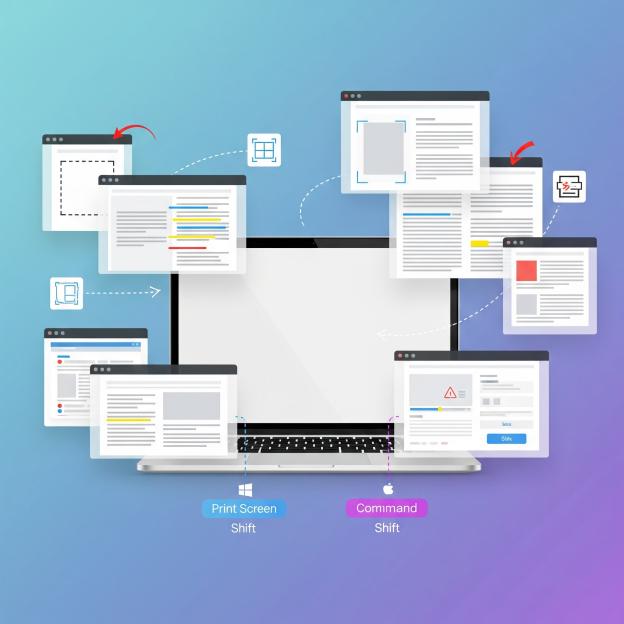Picture this: your laptop crashes during an important presentation, your phone gets stolen with all your family photos, or your team needs to collaborate on a crucial project from different time zones. In moments like these, cloud storage isn’t just convenientâit’s your digital lifeline.
But with so many options available, choosing between two giants like Dropbox and OneDrive can feel overwhelming.
You’re not alone in this dilemma. Millions of professionals, students, and families wrestle with the same decision daily. Should you go with Dropbox’s reputation for simplicity and speed, or opt for OneDrive’s deep integration with Microsoft’s ecosystem? The answer isn’t one-size-fits-all, and making the wrong choice could impact your productivity, security, and budget for years to come.
Understanding Cloud Storage: The Foundation of Modern Digital Life
Cloud storage has revolutionized how we manage, share, and protect our digital assets. Instead of relying on physical hard drives or USB sticks, cloud storage solutions store your files on remote servers accessible through the internet. This technology enables file synchronization across devices, remote collaboration, and automatic backup functionality.
Both Dropbox and OneDrive belong to the category of file hosting services that provide cloud-based storage solutions. These platforms offer more than simple storageâthey’re comprehensive digital asset management systems that facilitate teamwork, document sharing, and business productivity.
The Evolution of File Sharing and Collaboration
The landscape of cloud storage has evolved dramatically since Dropbox pioneered the sync folder concept in 2007. Today’s cloud storage providers offer sophisticated features including real-time collaboration, version control, advanced security protocols, and artificial intelligence-powered organization tools.
Microsoft OneDrive, launching later as part of the broader Microsoft 365 ecosystem, took a different approach by integrating deeply with existing productivity software. This fundamental difference in philosophy continues to shape how each platform serves its users today.
Dropbox: The Pioneer of Simple Cloud Storage
Dropbox built its reputation on simplicity and reliability. The platform’s clean interface and intuitive file synchronization made it the go-to choice for individuals and small businesses looking for straightforward cloud storage solutions.
Key Dropbox Features and Capabilities
File Synchronization and Accessibility Dropbox excels in file sync speed and reliability. The platform uses block-level sync technology, which means only the changed portions of files are uploaded rather than entire documents. This approach significantly reduces sync times, especially for large files like video projects or CAD drawings.
Collaboration Tools and Workspace Management Dropbox offers several collaboration features including Dropbox Paper for document creation, shared folders for team projects, and commenting systems for feedback collection. The platform integrates with over 300,000 third-party applications, making it highly versatile for different workflows.
Storage Capacity and File Handling One of Dropbox’s standout features is its massive file upload capability. Users can upload individual files up to 2TB in size on paid plans, making it ideal for creative professionals working with large media files. The platform also offers Smart Sync functionality, allowing users to access all files while only storing frequently used items locally.
Security and Privacy Measures Dropbox implements 256-bit AES encryption for files at rest and uses SSL/TLS protocols for data in transit. The platform offers two-factor authentication, remote device wipe capabilities, and advanced sharing controls with password protection and expiration dates.
Dropbox Pricing Structure
Dropbox offers several tiers to accommodate different user needs:
- Basic Plan: 2GB free storage
- Plus Plan: 2TB storage for $9.99/month
- Family Plan: 2TB shared storage for up to 6 users at $16.99/month
- Professional Plan: 3TB storage with advanced features for $16.58/month
Business plans start at $15/user/month for teams requiring collaboration tools and administrative controls.
Microsoft OneDrive: Integration-Focused Cloud Storage
OneDrive takes a different approach by positioning itself as an integral component of the Microsoft ecosystem. Rather than operating as a standalone service, OneDrive functions as the storage backbone for Microsoft 365 applications.
OneDrive’s Core Features and Functionality
Microsoft Ecosystem Integration OneDrive’s primary strength lies in its seamless integration with Microsoft Office applications. Users can create, edit, and collaborate on Word documents, Excel spreadsheets, and PowerPoint presentations directly within the cloud storage interface. This integration extends to Windows operating systems, where OneDrive appears as a native component.
Collaboration and Productivity Tools The platform offers real-time co-authoring capabilities through Microsoft 365 apps. Multiple users can simultaneously edit documents, with changes appearing instantly across all connected devices. OneDrive also integrates with Microsoft Teams for enhanced communication and project management.
Storage Options and File Management OneDrive provides 5GB of free storage, which is more generous than Dropbox’s offering. However, paid plans are generally more storage-limited, with most business plans offering 1TB per user. The platform supports file uploads up to 250GB, which is significantly lower than Dropbox’s 2TB limit.
Security and Compliance Features OneDrive leverages Microsoft’s enterprise-grade security infrastructure, including advanced threat protection, data loss prevention, and compliance tools for various industry standards. The platform offers encryption both in transit and at rest, plus comprehensive audit logs for enterprise customers.
OneDrive Pricing Options
OneDrive’s pricing is often bundled with Microsoft 365 subscriptions:
- Basic Plan: 5GB free storage
- Microsoft 365 Personal: 1TB storage plus Office apps for $69.99/year
- Microsoft 365 Family: 6TB shared storage (1TB per person) for $99.99/year
- OneDrive Standalone: 100GB for $1.99/month or 1TB for $6.99/month
Business plans range from $5/user/month for basic storage to $22/user/month for full Microsoft 365 enterprise features.
Head-to-Head Comparison: Dropbox vs OneDrive
Storage Capacity and File Size Limits
Winner: Dropbox for large files, OneDrive for free storage
Dropbox clearly wins in file size handling, supporting uploads up to 2TB compared to OneDrive’s 250GB limit. This difference is crucial for video editors, architects, and other professionals working with massive files. However, OneDrive offers more generous free storage at 5GB versus Dropbox’s 2GB.
For paid plans, Dropbox generally provides more storage value, especially for individual users. Business customers might find OneDrive’s bundled approach more cost-effective when factoring in included Office applications.
Synchronization Speed and Performance
Winner: Dropbox
Independent testing consistently shows Dropbox outperforming OneDrive in sync speed and reliability. Dropbox’s proprietary sync technology and optimized infrastructure result in faster file transfers and more consistent performance across different network conditions.
OneDrive has improved significantly in recent years but still lags behind Dropbox, particularly for large files or in areas with limited internet connectivity. Users frequently report sync conflicts and slower upload speeds with OneDrive compared to Dropbox.
Collaboration and Productivity Features
Winner: Depends on your ecosystem preference
OneDrive excels for teams already using Microsoft 365 applications. The seamless integration allows for real-time collaboration on Office documents without leaving the familiar Microsoft interface. Features like co-authoring, comment threading, and version tracking work flawlessly within the Microsoft ecosystem.
Dropbox offers broader third-party integration and works well with various productivity tools beyond Microsoft Office. Its collaboration features are more platform-agnostic, making it better for teams using diverse software solutions.
User Interface and Ease of Use
Winner: Dropbox
Dropbox maintains its reputation for simplicity and intuitive design. The interface is clean, consistent across platforms, and easy to navigate for users of all technical skill levels. File organization, sharing, and basic tasks require minimal learning curve.
OneDrive’s interface, while improved, can feel cluttered and confusing, especially for users not familiar with Microsoft’s design language. The integration with Windows Explorer helps Windows users but creates inconsistency for Mac and mobile users.
Security and Privacy Considerations
Winner: Tie with different strengths
Both platforms offer robust security features, but with different approaches. Dropbox provides clear, user-friendly security controls and has been transparent about government data requests. The platform offers excellent sharing controls with granular permission settings.
OneDrive benefits from Microsoft’s enterprise security infrastructure and compliance certifications. It’s particularly strong for organizations requiring specific regulatory compliance. However, Microsoft’s data collection practices and government relationships may concern privacy-focused users.
Neither platform offers zero-knowledge encryption by default, meaning both companies can technically access user files. Users requiring maximum privacy should consider additional encryption tools or alternative providers.
Mobile Applications and Cross-Platform Support
Winner: Dropbox
Dropbox’s mobile apps consistently receive higher ratings for usability and reliability across iOS and Android platforms. The apps offer full functionality including offline access, automatic photo backup, and seamless file sharing.
OneDrive’s mobile apps work well but are more focused on Microsoft 365 integration. They’re excellent for Office document editing but less polished for general file management compared to Dropbox.
Customer Support and Service Reliability
Winner: OneDrive for business, Dropbox for individuals
Microsoft provides comprehensive support options for business customers, including phone support, extensive documentation, and dedicated account management for enterprise clients. The service benefits from Microsoft’s global infrastructure and reliability track record.
Dropbox offers good support for paid users but limited options for free accounts. However, the platform’s simpler design often requires less support intervention, and community resources are extensive.
Pricing Analysis: Value for Money
Individual Users
For personal use, the choice often comes down to storage needs and ecosystem preference:
- Light users (under 100GB): OneDrive’s free 5GB and lower-tier paid plans offer better value
- Heavy users (over 1TB): Dropbox provides more storage and better performance for the price
- Microsoft Office users: OneDrive bundled with Microsoft 365 subscriptions often provides better overall value
Business and Enterprise Customers
Business pricing requires careful consideration of total cost of ownership:
- Small teams: Dropbox’s straightforward per-user pricing is often more predictable
- Microsoft-centric organizations: OneDrive’s integration can reduce software licensing costs
- Enterprise customers: Both platforms offer competitive enterprise pricing with volume discounts
Hidden Costs and Considerations
Consider these additional factors when evaluating total costs:
- Third-party integration costs: Dropbox’s broader compatibility might reduce additional software needs
- Training and onboarding: OneDrive may require less training for Microsoft-familiar teams
- Migration costs: Moving existing data and workflows between platforms can be expensive
Use Case Scenarios: Which Platform Fits Your Needs?
Creative Professionals and Media Companies
Recommendation: Dropbox
Video editors, photographers, and designers benefit from Dropbox’s superior large file handling and faster sync speeds. The platform’s integration with creative software like Adobe Creative Suite and its excellent sharing controls make it ideal for client collaboration.
Case example: A video production company regularly works with 4K footage files exceeding 100GB. Dropbox’s 2TB file size limit and optimized sync technology enable efficient collaboration with remote editors and clients.
Microsoft-Centric Organizations
Recommendation: OneDrive
Companies heavily invested in Microsoft 365 applications will find OneDrive’s integration invaluable. The seamless workflow between Word, Excel, PowerPoint, and Teams creates a unified productivity environment.
Case example: A consulting firm using Microsoft 365 for all operations benefits from OneDrive’s real-time collaboration features, allowing multiple consultants to work on proposals simultaneously while maintaining version control.
Small Businesses and Startups
Recommendation: Depends on growth plans
Growing businesses should consider their long-term technology strategy. Dropbox offers more flexibility and easier migration paths, while OneDrive provides cost savings for Microsoft Office users.
Case example: A startup might begin with OneDrive for cost savings but plan to migrate to Dropbox as file sharing needs become more complex and diverse.
Educational Institutions
Recommendation: OneDrive
Schools and universities often have Microsoft 365 Education licenses, making OneDrive the natural choice. The platform’s classroom collaboration features and administrative controls suit educational environments well.
Remote and Distributed Teams
Recommendation: Evaluate based on existing tools
Remote teams should prioritize the platform that integrates best with their existing communication and productivity tools. Dropbox works well with diverse tool stacks, while OneDrive excels for Microsoft-focused teams.
Advanced Features and AI Integration
Dropbox’s Innovation Focus
Dropbox has invested heavily in AI-powered features including:
- Smart Sync: Automatically manages local storage by keeping frequently accessed files on-device
- Document scanning: Mobile apps can scan and digitize physical documents
- Dropbox Dash: AI-powered universal search across all connected applications
- Content insights: Analytics on file engagement and collaboration patterns
OneDrive’s AI Capabilities
Microsoft’s AI integration includes:
- Microsoft Copilot: AI assistant for file summarization and content creation
- Intelligent search: AI-powered file discovery using natural language queries
- Automated organization: Smart folder suggestions based on content analysis
- Compliance automation: AI-assisted data governance and retention policies
Security Deep Dive: Protecting Your Digital Assets
Data Encryption and Protection
Both platforms implement industry-standard encryption protocols:
- Encryption at rest: 256-bit AES encryption for stored files
- Encryption in transit: SSL/TLS protocols for data transfer
- Server security: Physical and digital protection of data centers
Access Controls and Authentication
Advanced security features include:
- Two-factor authentication: Both platforms support multiple 2FA methods
- Single sign-on (SSO): Enterprise integration with identity providers
- Device management: Remote wipe capabilities for lost or stolen devices
- Sharing controls: Granular permissions for file and folder access
Compliance and Regulatory Considerations
Enterprise customers must consider compliance requirements:
- GDPR compliance: Both platforms offer data protection compliance tools
- HIPAA: Available for healthcare organizations on business plans
- SOC 2: Regular security audits and certifications
- Industry-specific: Additional compliance frameworks for financial services and government
Migration Strategies: Switching Between Platforms
Planning Your Migration
Moving from one cloud storage platform to another requires careful planning:
- Data audit: Catalog existing files and folder structures
- Permission mapping: Document current sharing and access controls
- Integration assessment: Identify connected applications and workflows
- Timeline planning: Phase migration to minimize disruption
Technical Migration Process
Tools and services are available to facilitate platform migration:
- Native migration tools: Both platforms offer basic import/export functionality
- Third-party services: Specialized migration services for large-scale transfers
- Manual migration: Selective file transfer for smaller data sets
Post-Migration Optimization
After completing migration, optimize your new setup:
- User training: Ensure team members understand the new platform
- Integration configuration: Set up connections with existing tools
- Security review: Verify access controls and sharing permissions
- Performance monitoring: Track sync speeds and user satisfaction
Future Trends and Platform Evolution
Cloud Storage Industry Trends
The cloud storage market continues evolving with several key trends:
- AI integration: Machine learning for file organization and insights
- Enhanced collaboration: Real-time editing and communication features
- Security advancement: Zero-trust architectures and advanced threat protection
- Edge computing: Faster local access combined with cloud benefits
Platform-Specific Roadmaps
Both Dropbox and OneDrive are investing in future capabilities:
Dropbox initiatives:
- Expanded AI features for content creation and organization
- Enhanced integration with emerging productivity tools
- Improved mobile-first experiences
- Sustainability commitments for carbon-neutral operations
OneDrive developments:
- Deeper Microsoft 365 integration with new applications
- Advanced AI capabilities through Microsoft Copilot
- Enhanced security features for enterprise customers
- Expanded global infrastructure for improved performance
Making Your Decision: A Practical Framework
Assessment Questions
Consider these key questions when choosing between Dropbox and OneDrive:
- What is your primary use case? (personal storage, team collaboration, creative projects)
- Which ecosystem do you prefer? (Microsoft-centric vs. platform-agnostic)
- What are your file size requirements? (large media files vs. documents)
- How important is sync speed? (critical for large files vs. acceptable delays)
- What’s your budget? (standalone storage vs. bundled productivity suite)
- Do you need specific compliance features? (industry regulations vs. basic security)
Decision Matrix
Create a weighted scoring system based on your priorities:
- Storage capacity: Rate importance and compare offerings
- Performance: Consider sync speed and reliability needs
- Integration: Evaluate existing tool compatibility
- Collaboration: Assess team workflow requirements
- Security: Match features to your risk tolerance
- Cost: Calculate total cost of ownership
Trial and Testing Approach
Before committing to either platform:
- Start free trials: Test both platforms with real workflows
- Involve key users: Get feedback from team members who will use the system daily
- Test integration: Verify compatibility with existing tools and processes
- Measure performance: Track sync speeds and reliability during trial periods
- Evaluate support: Test customer service responsiveness and helpfulness
Conclusion: The Right Choice for Your Needs
The choice between Dropbox and OneDrive ultimately depends on your specific needs, existing technology stack, and long-term goals. Neither platform is universally superiorâeach excels in different areas and serves different user types effectively.
Choose Dropbox if you:
- Work with large files regularly (video, design, engineering)
- Value sync speed and reliability above all else
- Use diverse software tools requiring broad integration
- Prefer simple, intuitive interfaces
- Need maximum file sharing flexibility
Choose OneDrive if you:
- Are already invested in the Microsoft ecosystem
- Prioritize cost-effectiveness for productivity suites
- Need deep Office application integration
- Require enterprise-grade compliance features
- Value bundled solutions over best-of-breed tools
Remember that your choice isn’t permanent. Both platforms offer migration tools and support, allowing you to switch if your needs change. Start with the platform that best meets your immediate requirements, but keep an eye on evolving features and changing needs that might influence future decisions.
The cloud storage landscape will continue evolving, with both Dropbox and OneDrive adapting to new technologies and user demands. Whatever platform you choose today, stay informed about new features and alternatives to ensure you’re always using the best solution for your digital life.








